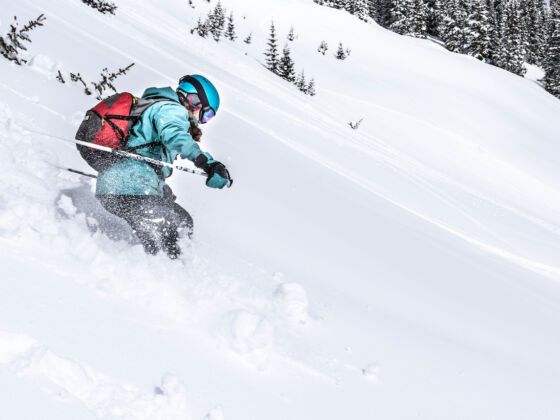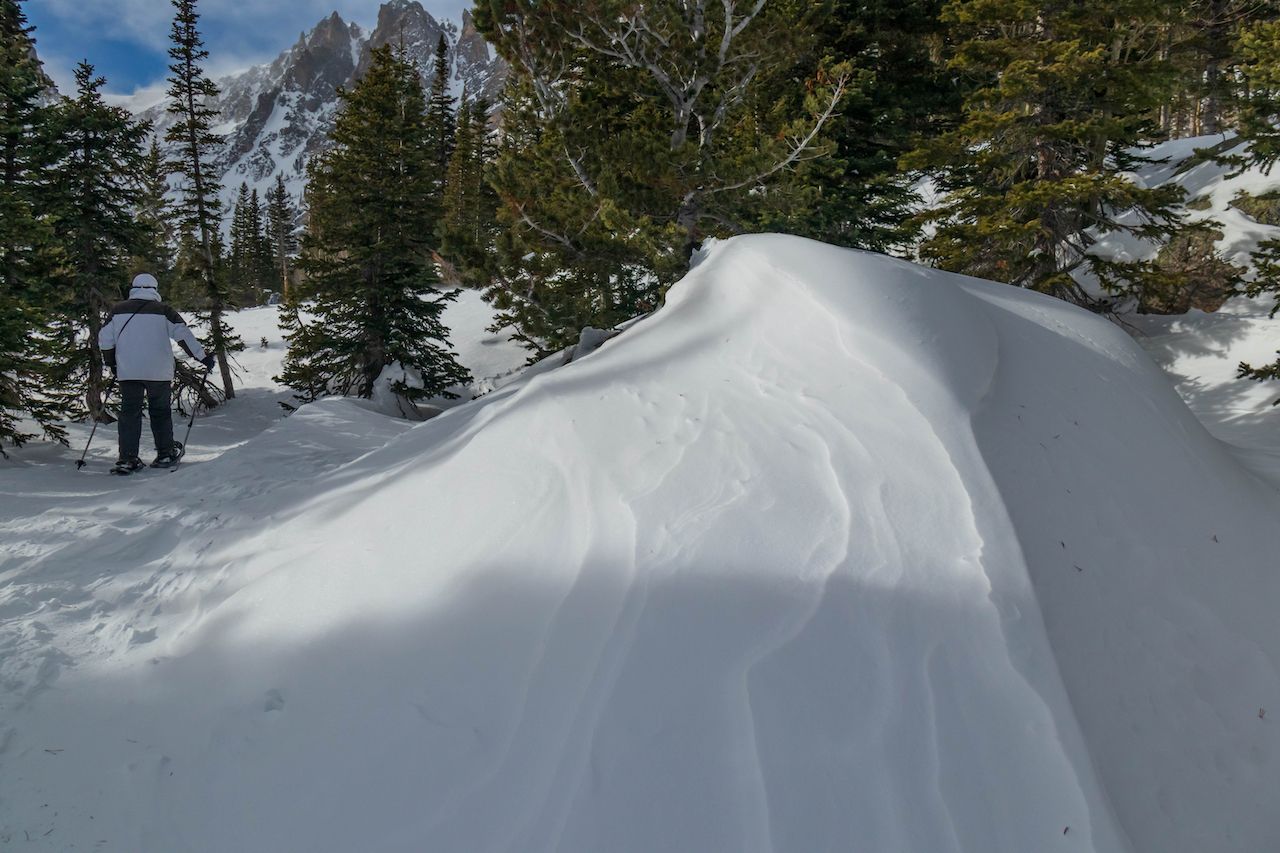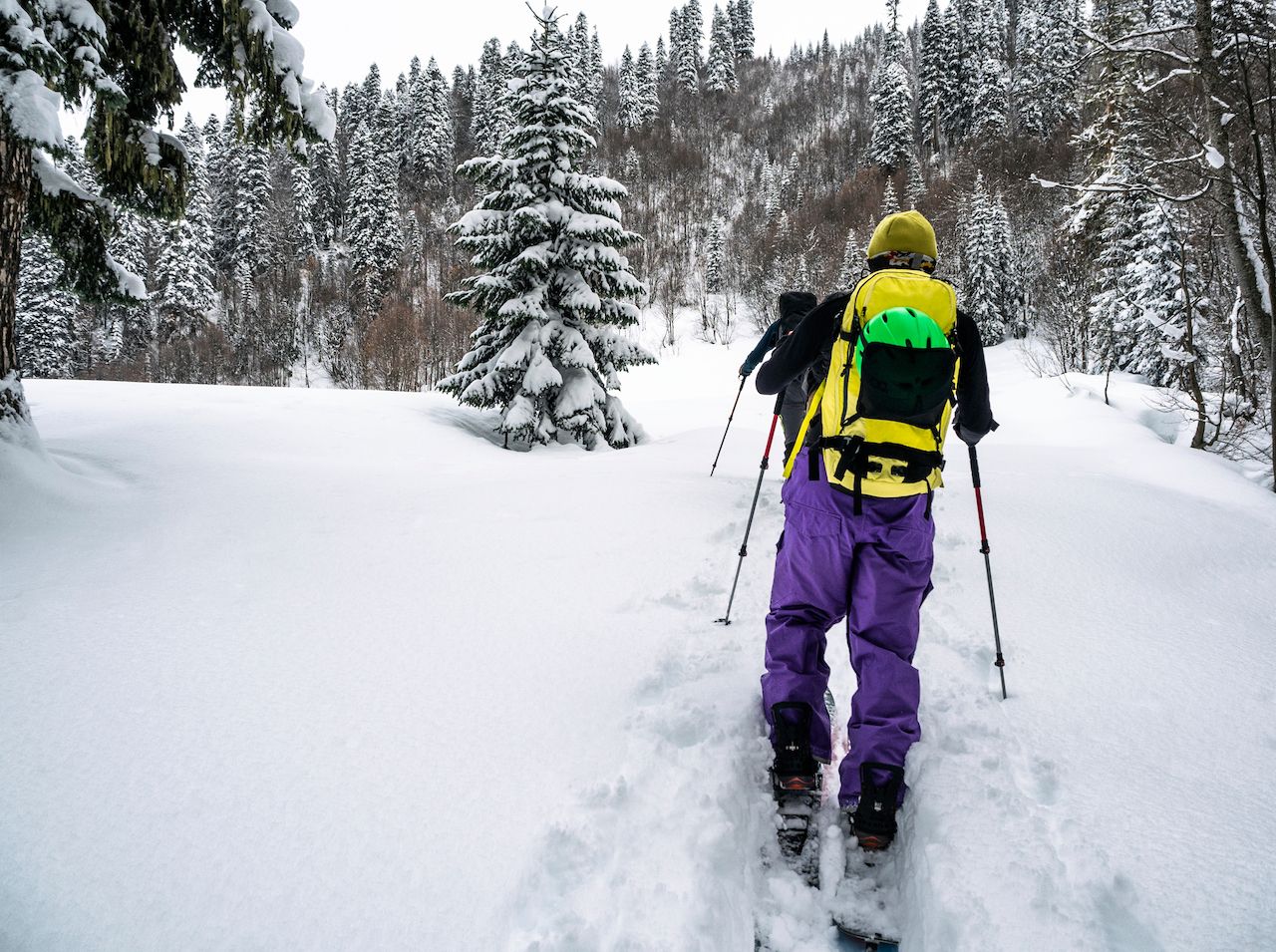Rocky Mountain National Park offers more than 265,000 acres of mountainous, snow-covered backcountry terrain. While much of this is skiable in winter, there’s just one problem: There aren’t any lifts. That means that if you want to ski inside the park, you must “earn your turns.” In other words, you gotta get up to get down. Backcountry skiing and snowboarding are very popular inside the park, offering both great exercise and incredible views of peaks that most only ever see in the summer. Plan properly, get equipped, and be ready for a workout. Climbing a mountain is even more fun in the snow.

The Best Backcountry Ski Lines in Rocky Mountain National Park
Preparing for a day in the backcountry

Photo: Lilkin/Shutterstock
Before ever heading into the backcountry it’s important to properly train and equip yourself in the case of an avalanche, injury, or another unexpected incident. Always have an avalanche beacon, shovel, and probe on you, as well as a winter-specific backpack that can carry this gear. You’ll also need plenty of water, food, and appropriate ski or snowboard gear. And, critically, you must have a buddy with all of the same equipment. Never ski or snowboard in the backcountry alone.
Check with the Colorado Avalanche Information Center the day before and the morning of your expedition to ensure conditions are safe. In general, slopes greater than 30 degrees are at a heightened risk of slides, and this is amplified after fresh snow or rapidly changing weather conditions. See Matador’s guide to planning a backcountry ski or snowboard trip for more info.
Hidden Valley

Photo: Martina Sliger/Shutterstock
Rocky’s primary backcountry ski area didn’t use to be backcountry at all. Until 1991, the Hidden Valley ski area operated within the park’s boundaries with a full-functioning operation that included lifts. Since its closure, backcountry skiers and split-boarders have used the easy access to the area for fun powder laps that don’t require a massive uphill climb.
Hidden Valley is great for beginner backcountry skiers and families. The terrain is wide open, and parking is available just off Trail Ridge Road. Strap on the skins and follow the well-established tracks up as far as you’d like, stopping occasionally to turn around and take in the view of seemingly endless snow-covered peaks. A road switches back and crosses above the ski area, marking the top of a relatively easy climb that takes less than an hour. For a more challenging ascent and a longer descent, cross the road and continue uphill.
Flat Top Mountain

Photo: Jeremy Janus/Shutterstock
Powder enthusiasts from Colorado’s front range head to Flat Top Mountain to ski the Banana Bowls after a fresh storm. Because the slope faces east and much of the rideable terrain is at a slope angle of fewer than 30 degrees, the terrain is generally safe even when new snow falls overnight. (Even so, always check current avalanche conditions.) You’ll ascend Flat Top Mountain from Bear Lake on both the Bear Lake and Fern Lake trails in an ascent that can be done in a morning if you’re on the trail by 9 AM. Despite their low-angled terrain, the Banana Bowls offer more challenge than Hidden Valley and the thrill of strapping in on the summit of a mountain.
A steeper ride beckons on a day with safe conditions, and Corral Couloir is there to answer the call. Also dropping from Flat Top Mountain, this steep and fast run is among the more challenging of the easily accessible ski runs inside the park. You could also take it a bit easier on North Bowl or head over to Ptarmigan Glacier for a mellower ride.
Riding with a guide

Photo: Lilkin/Shutterstock
Backcountry conditions can be hazardous, and wayfinding isn’t always easy, especially if there’s inclement weather involved. Multiple tour outfitters including Colorado Wilderness Rides & Guides and Colorado Mountain School offer full-day guided ski tours in Rocky Mountain National Park. On a guided excursion, expect to receive plenty of insider knowledge on identifying safe slopes to ride and what hazards to look out for — though a guided tour is no substitute for proper avalanche training. Skiing or riding with a guide service also ensures you’ll be taken to the good stuff while avoiding anything that isn’t safe.